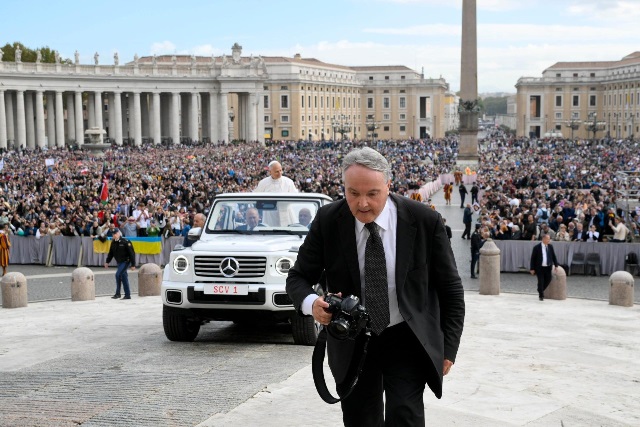Francesco Sforza, Vatican’s Long-Serving Papal Photographer, Retires Almost Half a Century of Service
Port Harcourt, Nigeria, Nov. 8, 2025 | Rev. Fr. Dr. Osemhantie Amos Okhueleigbe
After nearly half a century behind the lens, Francesco Sforza, one of the Vatican’s most discreet and devoted photographers, has laid down his camera. His retirement marks the close of a remarkable 48-year career that spanned the pontificates of Paul VI, John Paul II, Benedict XVI, and Francis, four popes, countless journeys, and an unbroken visual chronicle of faith, humanity, and history.
Paolo Ruffini, Prefect of the Dicastery for Communication, paid glowing tribute to Sforza, describing him as “a craftsman who placed his eyes and heart at the service of the popes.” Ruffini praised the veteran photographer’s ability to transform the camera into “an instrument of communion,” capturing images that conveyed the compassion, tenderness, and humility that define the pontificate of Pope Francis.
Throughout his years of quiet service, Sforza became a silent witness to many of the Church’s most defining moments, the closing sessions of Vatican II’s spirit under Paul VI, the missionary zeal of John Paul II, the contemplative intellect of Benedict XVI, and the pastoral simplicity of Francis. His photographs, preserved in the archives of L’Osservatore Romano and Vatican Media, now form an invaluable visual history of the modern papacy.
A member of the Vatican’s official Photo Service, Sforza joined in the 1970s, when darkrooms and film reels still dominated the craft. He lived through the transformation of papal photography from monochrome stills to the digital age, a witness not only to changing popes but also to changing technology. His work embodied the Vatican photographer’s unwritten vocation: to see without intruding, to document without distorting, to preserve moments of grace for generations yet unborn.
His retirement evokes memories of other great Vatican photographers such as Arturo Mari, who served six pontiffs, including the long and luminous papacy of St. John Paul II. Together, these men shaped the visual language through which the Catholic world sees its shepherds, in prayer, pilgrimage, and proximity to the people.
In a brief message, the Dicastery for Communication announced that younger photographers, including Simone Risoluti, would continue the sacred duty of visually documenting the Petrine ministry. “It is not just the end of an era,” said one colleague, “but the passing of a torch lit by fidelity and quiet excellence.”
For the Church, Sforza’s bowing out is more than a professional transition; it is a reminder that some ministries are exercised not from pulpits but through lenses, through eyes that have learned to find grace in gestures, truth in faces, and eternity in moments.

